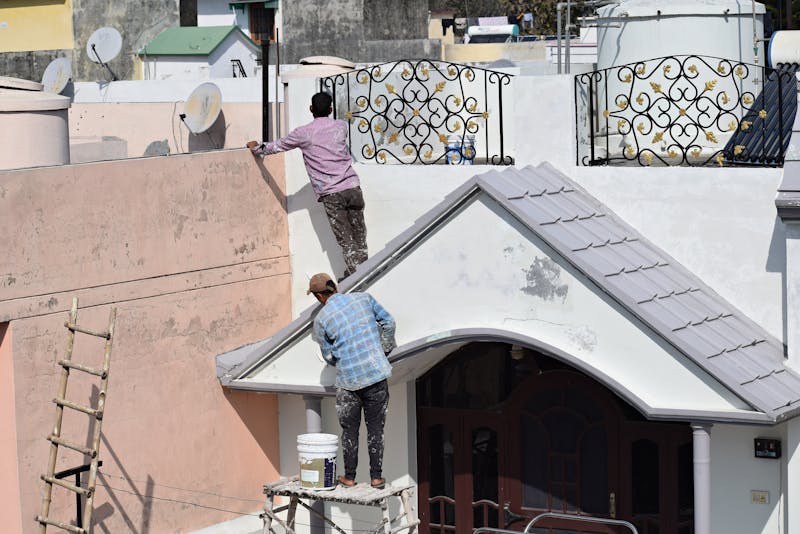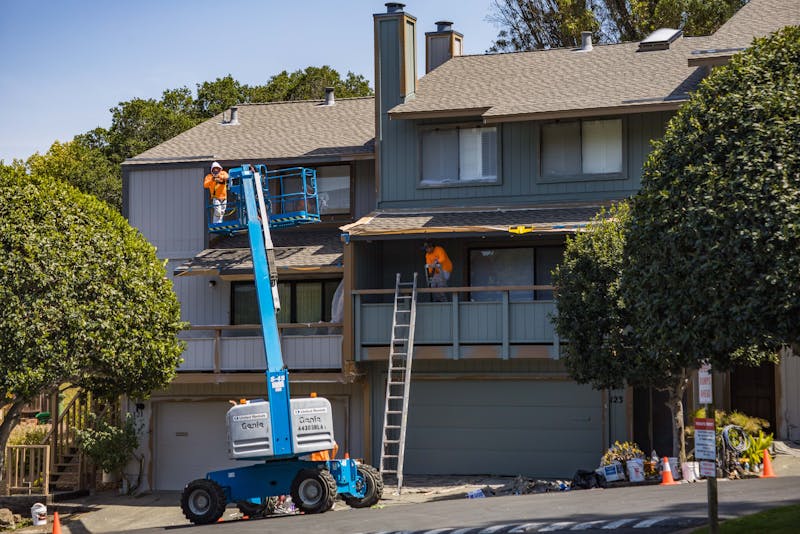- Proper planning and preparation are essential for a successful exterior painting project.
- Inspect your home’s exterior for damage and repair issues before painting.
- Cleaning, sanding, and treating surfaces ensures paint adhesion and long-lasting results.
- Choose the right paint type, finish, and color to match your home and climate.
- Gather all necessary tools, materials, and safety equipment before starting.
- Consider weather, timing, and budgeting to avoid delays and additional costs.
- Hiring professionals may be beneficial for large or complex projects for better results and safety.
Painting the exterior of your home is more than just a cosmetic upgrade—it’s a major investment in your property’s appearance, value, and protection. However, a successful exterior painting project doesn’t start with a paintbrush; it begins with careful planning and preparation. Homeowners often underestimate the importance of prep work, which can lead to peeling paint, uneven finishes, or wasted time and money.
This comprehensive checklist will guide you through everything you need to consider before painting the exterior of your house, from assessing your home’s condition to choosing the right materials, tools, and colors. By following this guide, you can ensure a professional-looking, long-lasting result.
Why Planning Is Crucial Before Painting Your Home
Before diving into any exterior painting project, planning is the foundation for success. Painting your home’s exterior is a labor-intensive task, and skipping proper planning can lead to mistakes, increased costs, and poor durability. A clear plan helps homeowners set realistic timelines, budgets, and expectations. It also ensures that the right tools, safety precautions, and preparation techniques are in place.
By carefully planning, you reduce the risk of paint peeling, blistering, or fading prematurely due to improper surface prep or unsuitable paint types. This section will explore why investing time in planning pays off in the long run.
Key planning considerations include:
- Understanding your home’s material and condition
- Scheduling around weather conditions
- Setting a realistic budget and timeline
- Choosing professional help if necessary
Inspecting Your Home’s Exterior: Where to Start
Before any paint touches the walls, a thorough inspection of your home’s exterior is essential. The condition of your siding, trim, and other surfaces will determine the preparation steps required and the types of paint you can use. Ignoring this step can lead to more extensive repairs later.
What to check during an inspection:
- Siding condition: Look for cracks, holes, or warped panels.
- Wood trim: Check for rot, insect damage, or peeling paint.
- Stucco or masonry: Inspect for cracks, moisture, or mildew.
- Windows and doors: Examine for water damage, peeling caulk, and loose frames.
- Roof and gutters: Ensure no leaks or debris can affect painting.
Documenting these findings will help you plan repairs and prevent future paint issues.
Cleaning and Preparing Surfaces for Painting

Proper cleaning and surface preparation are critical for paint adhesion and durability. Dirt, mold, and mildew prevent paint from sticking correctly, causing peeling and flaking. Homeowners often overlook this step, assuming a quick rinse is enough.
Steps to clean and prep surfaces:
- Power washing: Remove dirt, grime, and loose paint. Use a pressure washer on a low setting to avoid damage.
- Scraping and sanding: Eliminate peeling paint and smooth rough edges.
- Mildew and mold treatment: Apply a solution of water and bleach or a commercial cleaner.
- Repairing damaged areas: Fill cracks, replace rotten wood, and patch stucco or masonry.
- Masking and covering: Protect windows, doors, plants, and outdoor fixtures from paint splatter.
Thorough surface preparation is essential for a long-lasting and flawless finish.
Choosing the Right Paint for Your Home Exterior
The type and color of paint you select have a direct impact on durability, appearance, and maintenance. Exterior paint is specially formulated to withstand harsh weather, UV exposure, and temperature fluctuations.
Factors to consider when choosing paint:
- Paint type: Latex (water-based) is flexible and easy to clean, while oil-based paints offer durability and smooth finishes.
- Finish options: Flat hides imperfections, satin/eggshell offers low sheen, and semi-gloss adds durability for trim and doors.
- Weather resistance: Choose paint formulated for your climate, whether hot, humid, or cold.
- Color selection: Consider curb appeal, neighborhood aesthetics, and heat reflection properties.
Investing in high-quality paint may increase upfront costs but significantly reduce future maintenance expenses.
Picking Colors: How to Make Your Home Stand Out
Choosing the right color can dramatically transform your home’s exterior. Homeowners often underestimate how different lighting conditions and architectural styles affect color perception.
Tips for selecting exterior paint colors:
- Use color samples: Test swatches on different walls and view them at various times of day.
- Consider the style of your home: Traditional, modern, or cottage homes may suit different color palettes.
- Highlight features: Trim, shutters, and doors can be painted in contrasting or complementary shades.
- Neighborhood context: Blend with the surroundings while standing out tastefully.
Remember, the right color enhances curb appeal and adds long-term value to your property.
Gathering Tools and Materials for the Project
Having the right tools and materials ready before starting saves time and avoids frustration. A well-stocked toolkit ensures a smoother workflow and more professional results.
Essential tools and materials include:
- Paintbrushes, rollers, and paint sprayers
- Painter’s tape and drop cloths
- Scrapers, sandpaper, and caulk
- Ladders and scaffolding for high areas
- Buckets, stirrers, and paint trays
- Safety gear: gloves, goggles, and masks
Creating a detailed checklist helps homeowners stay organized and prevents mid-project delays.
Safety Precautions Every Homeowner Should Follow
Exterior painting involves heights, ladders, chemicals, and potentially slippery surfaces. Prioritizing safety prevents accidents and ensures a smooth painting process.
Safety measures to implement:
- Use sturdy ladders on flat surfaces and follow proper ladder safety techniques.
- Wear protective gear, including gloves, goggles, and masks.
- Avoid painting during extreme weather conditions.
- Keep children and pets away from the work area.
- Follow manufacturer instructions for paint and cleaning chemicals.
Safety planning is just as crucial as choosing the right paint or tools.
Timing Your Project: When Is the Best Time to Paint?
Weather conditions play a significant role in the success of your exterior painting project. Choosing the right time ensures optimal drying, adhesion, and finish quality.
Factors to consider:
- Temperature: Ideal painting temperatures range between 50°F and 85°F.
- Humidity: Low to moderate humidity levels help paint dry evenly.
- Rainfall: Avoid painting before or during rain to prevent streaks and peeling.
- Seasonal planning: Spring and fall are often ideal due to moderate weather conditions.
Planning your schedule reduces the risk of weather-related damage to your new paint.
Budgeting: How Much Does It Cost to Paint the Exterior of a House?
Budgeting is a critical step before starting your painting project. Costs vary depending on your home’s size, surface type, paint quality, and whether you hire professionals or do it yourself.
Typical cost considerations include:
- Paint and primer: High-quality paint may cost $40–$70 per gallon.
- Tools and materials: Ladders, brushes, sprayers, and safety equipment.
- Labor: Professional painting services can cost $2–$6 per square foot.
- Repairs and prep: Surface cleaning, caulking, sanding, and wood replacement.
Setting a clear budget prevents overspending and helps homeowners make informed decisions about DIY versus professional help.
Hiring Professionals: When to Call in the Experts

While DIY painting is possible, some situations require professional expertise. Large homes, high walls, or intricate architectural features may be challenging for homeowners to tackle alone.
Reasons to hire professionals:
- Experience with surface prep and specialized finishes
- Access to professional-grade tools and equipment
- Faster completion and more precise results
- Insurance coverage in case of accidents or damage
Even if you plan a DIY project, consulting a professional for advice can save time, money, and stress.
Checklist Summary: Step-by-Step Before You Paint
Here’s a quick, actionable checklist for homeowners preparing to paint their home’s exterior:
Before Painting:
- Inspect siding, trim, and roof conditions
- Repair cracks, rot, and water damage
- Clean surfaces with power washing
- Remove loose or peeling paint
- Treat mold and mildew
- Mask windows, doors, and fixtures
Materials and Tools:
- Select high-quality exterior paint and primer
- Gather brushes, rollers, sprayers, ladders, and safety gear
- Prepare drop cloths and painter’s tape
Project Planning:
- Test paint colors and finishes
- Schedule the project according to weather conditions
- Set a realistic budget and timeline
- Decide whether DIY or professional help is needed
Safety First:
- Wear gloves, masks, and goggles
- Use ladders safely and avoid slippery surfaces
- Keep the area secure for children and pets
Following this checklist ensures a smooth process, professional-looking results, and long-lasting exterior paint.
Final Thoughts on Painting the Exterior of Your House
Painting the exterior of your home is a transformative project that enhances both curb appeal and property protection. Proper planning, preparation, and execution are critical to achieving a durable, beautiful finish. By inspecting your home, preparing surfaces, choosing the right materials, and following a detailed checklist, homeowners can avoid common pitfalls and ensure a stress-free painting experience.
Whether you’re tackling the project yourself or hiring professionals, the key is preparation, attention to detail, and patience. A well-planned exterior painting project not only improves your home’s aesthetics but also increases its value and longevity.
